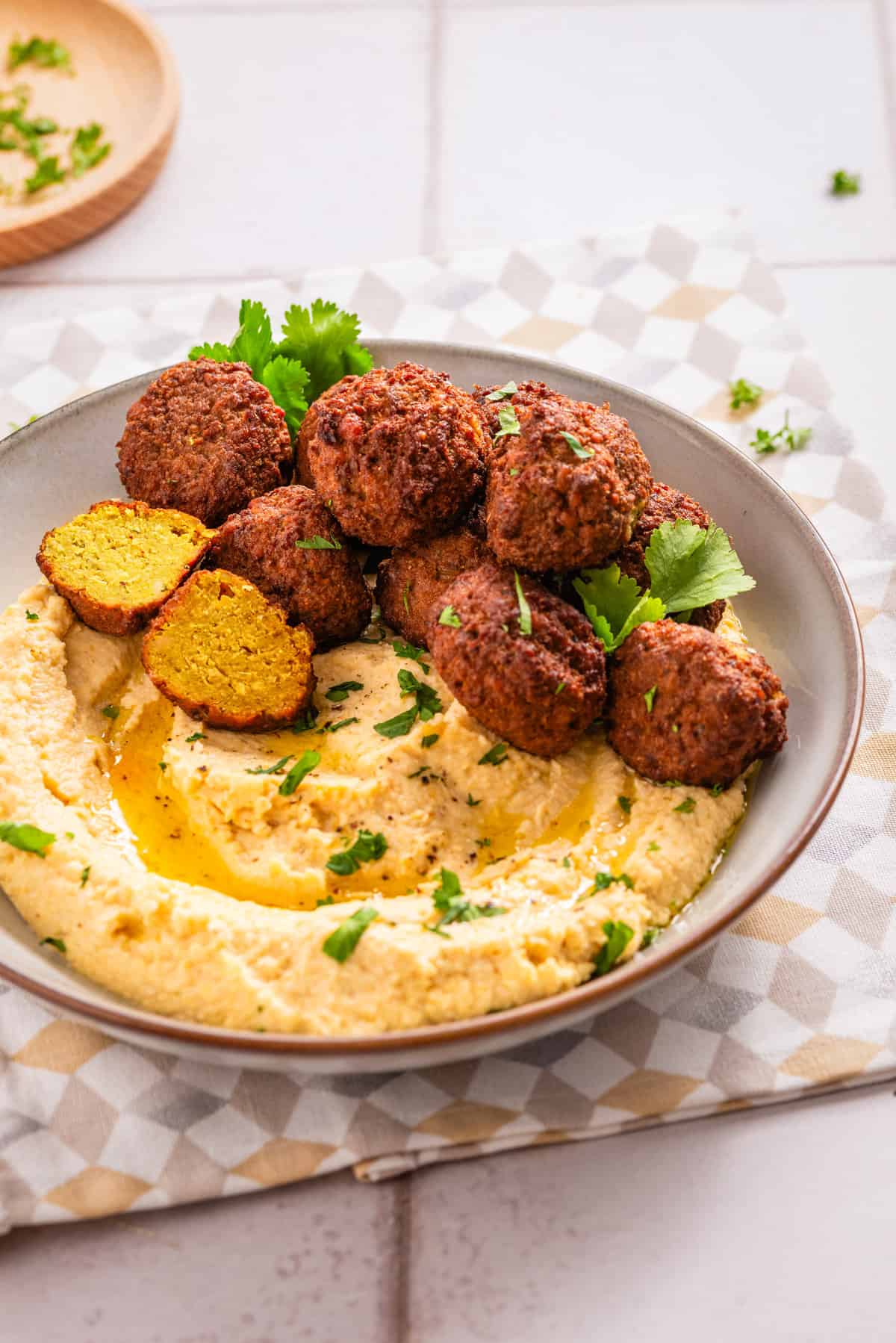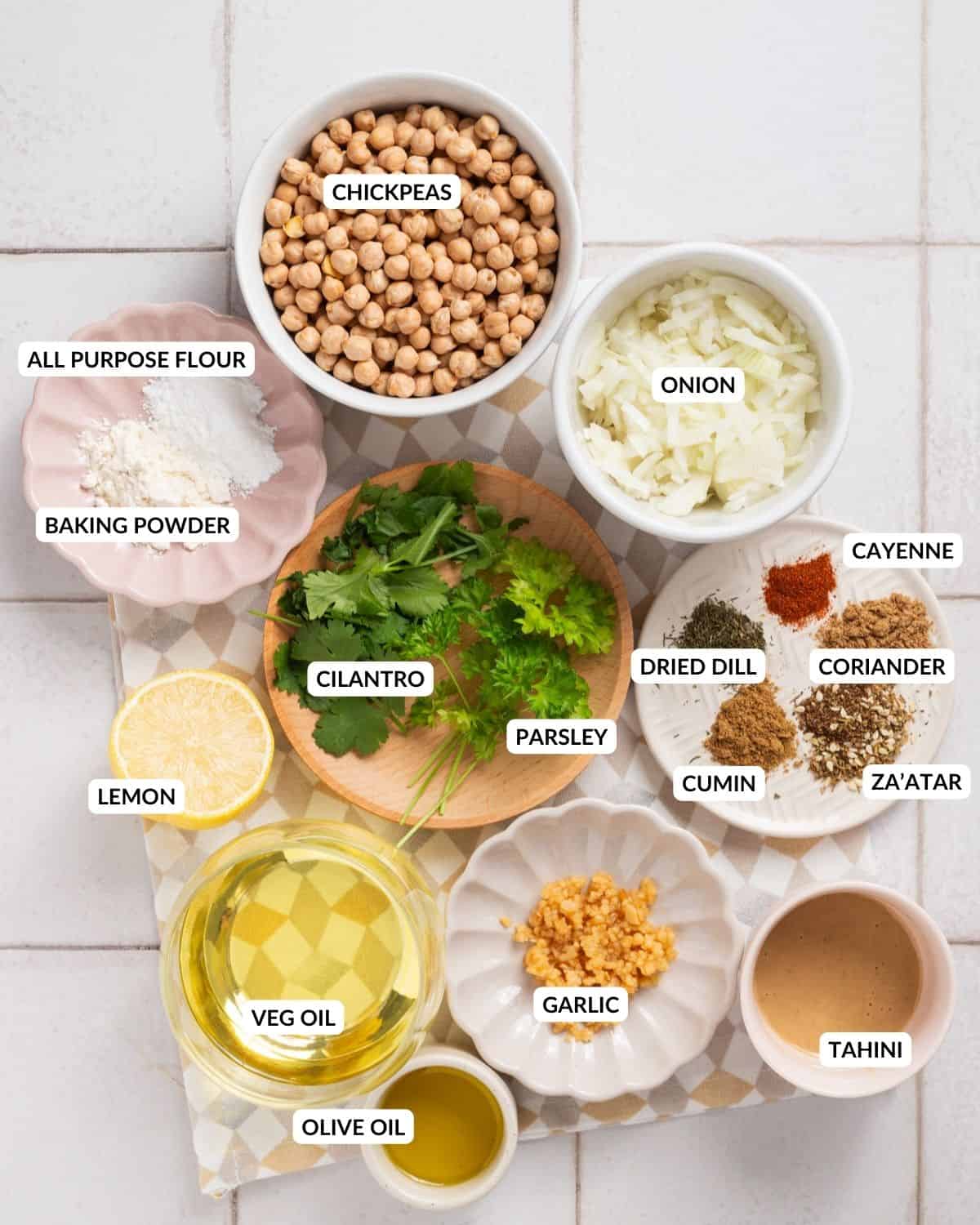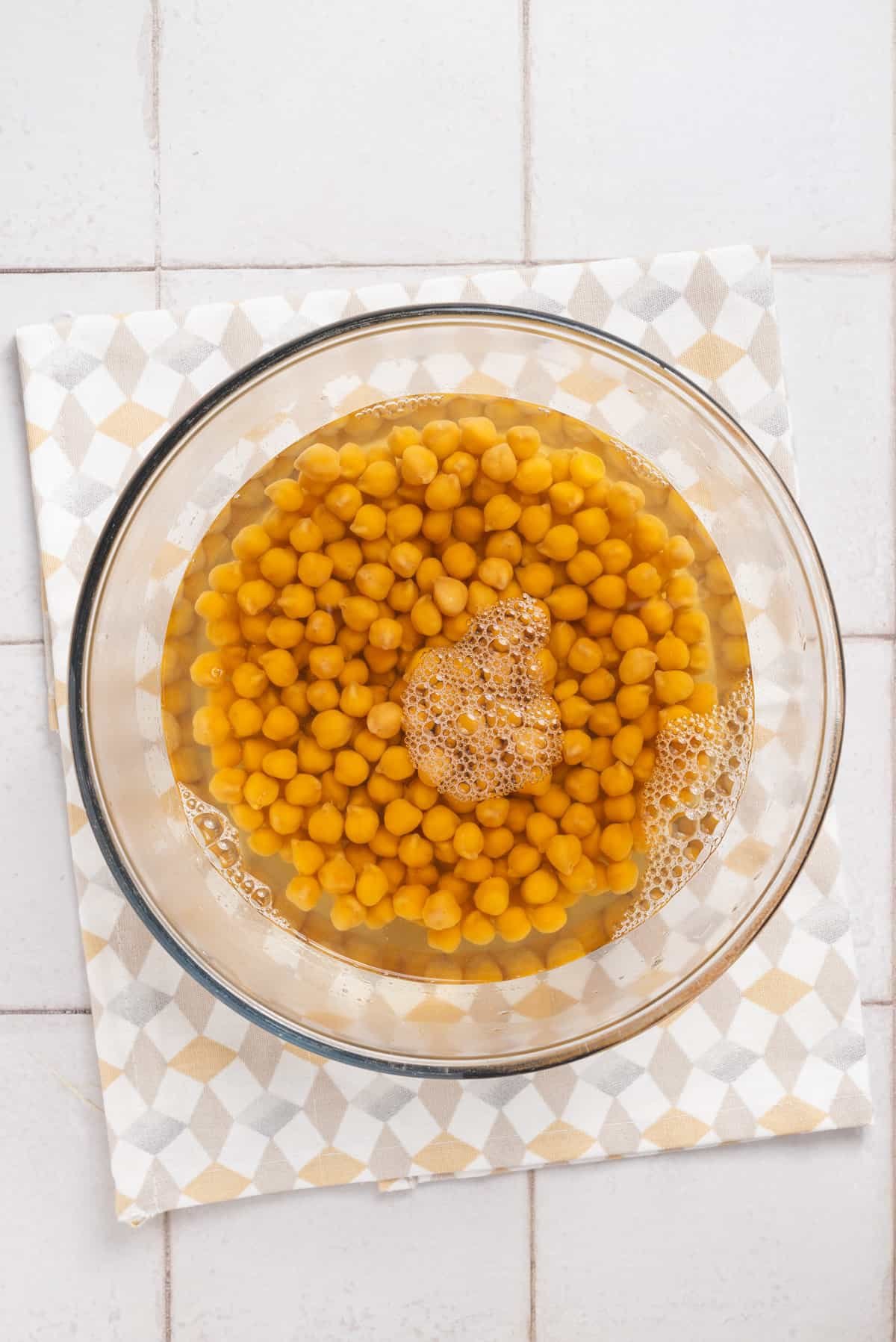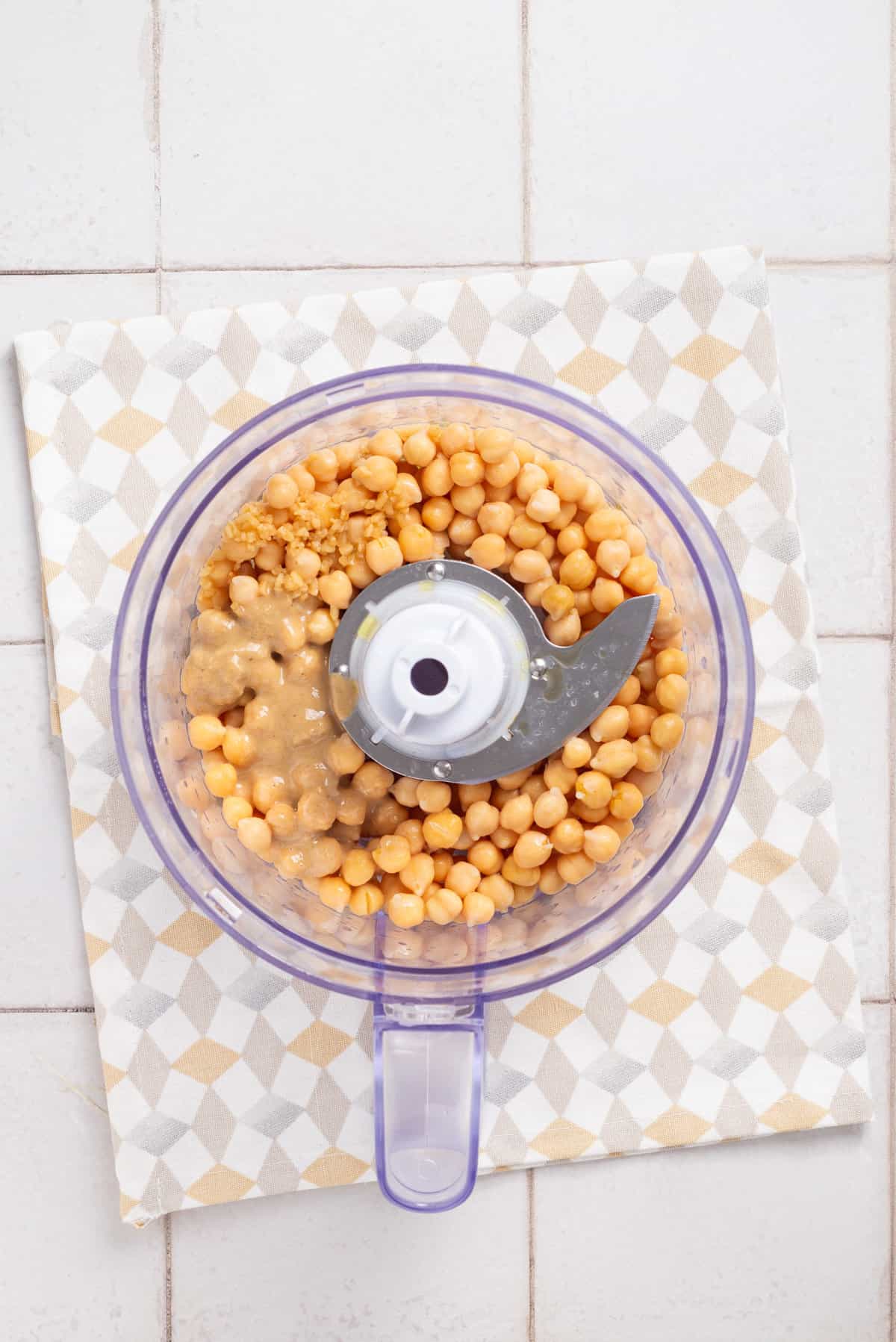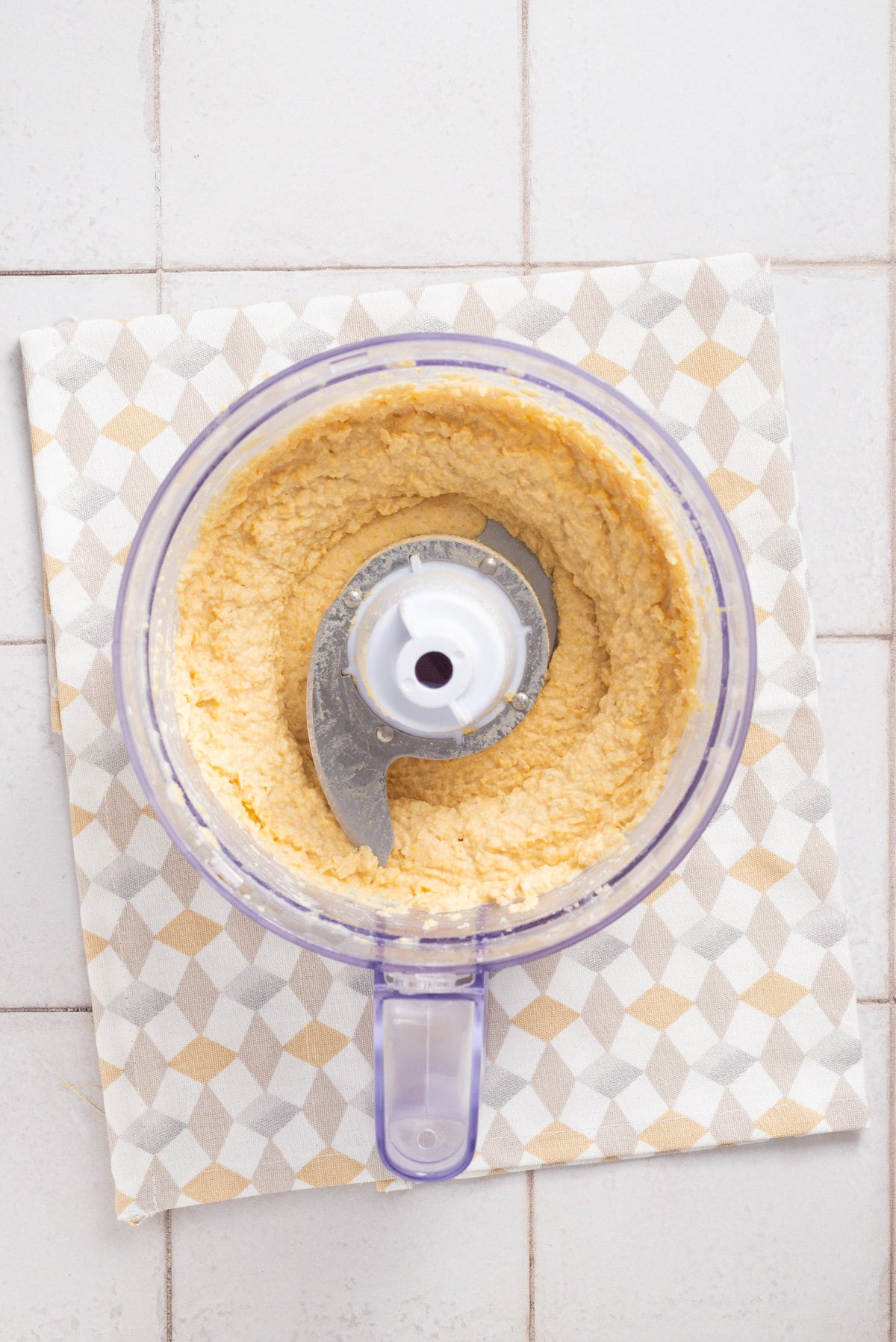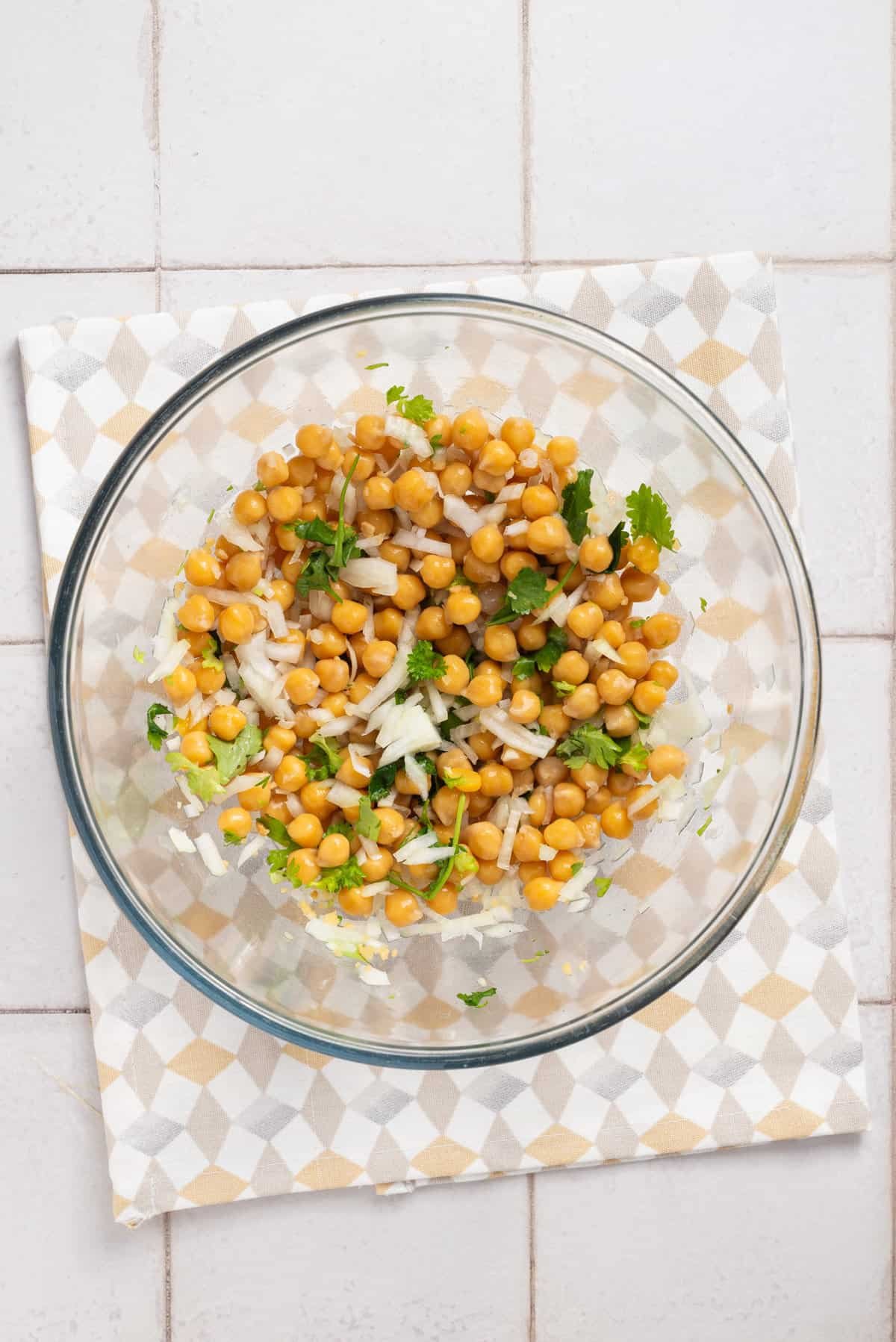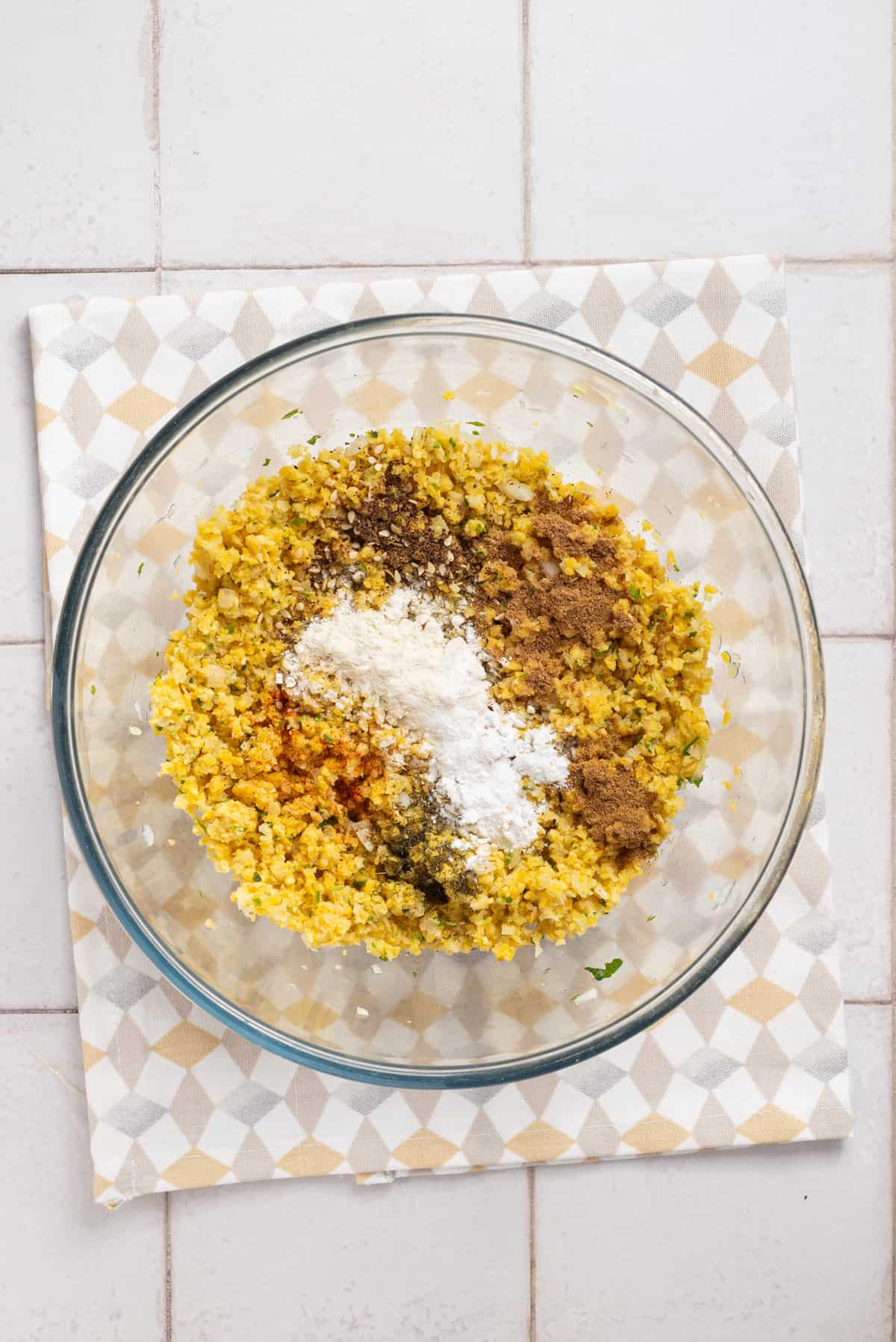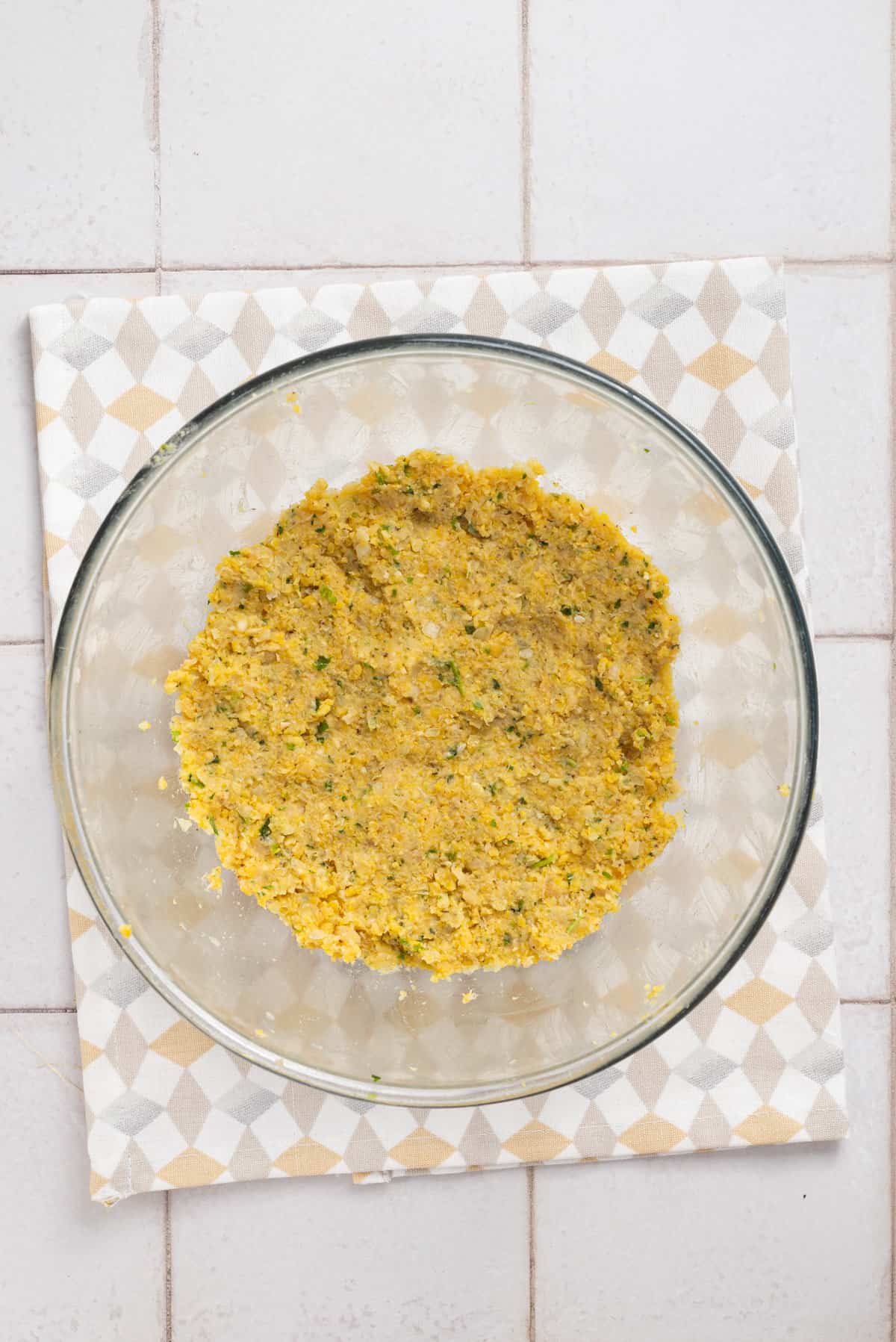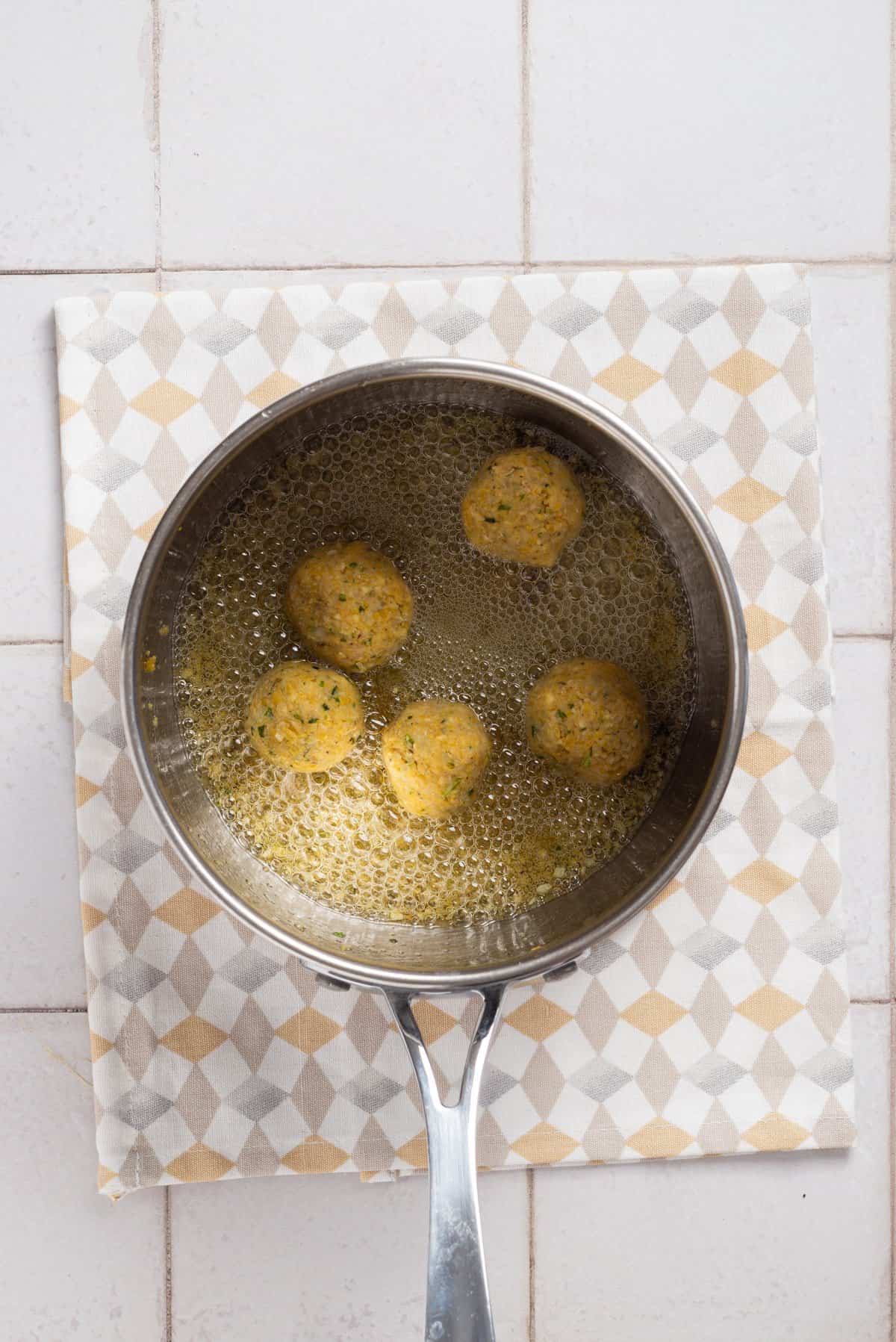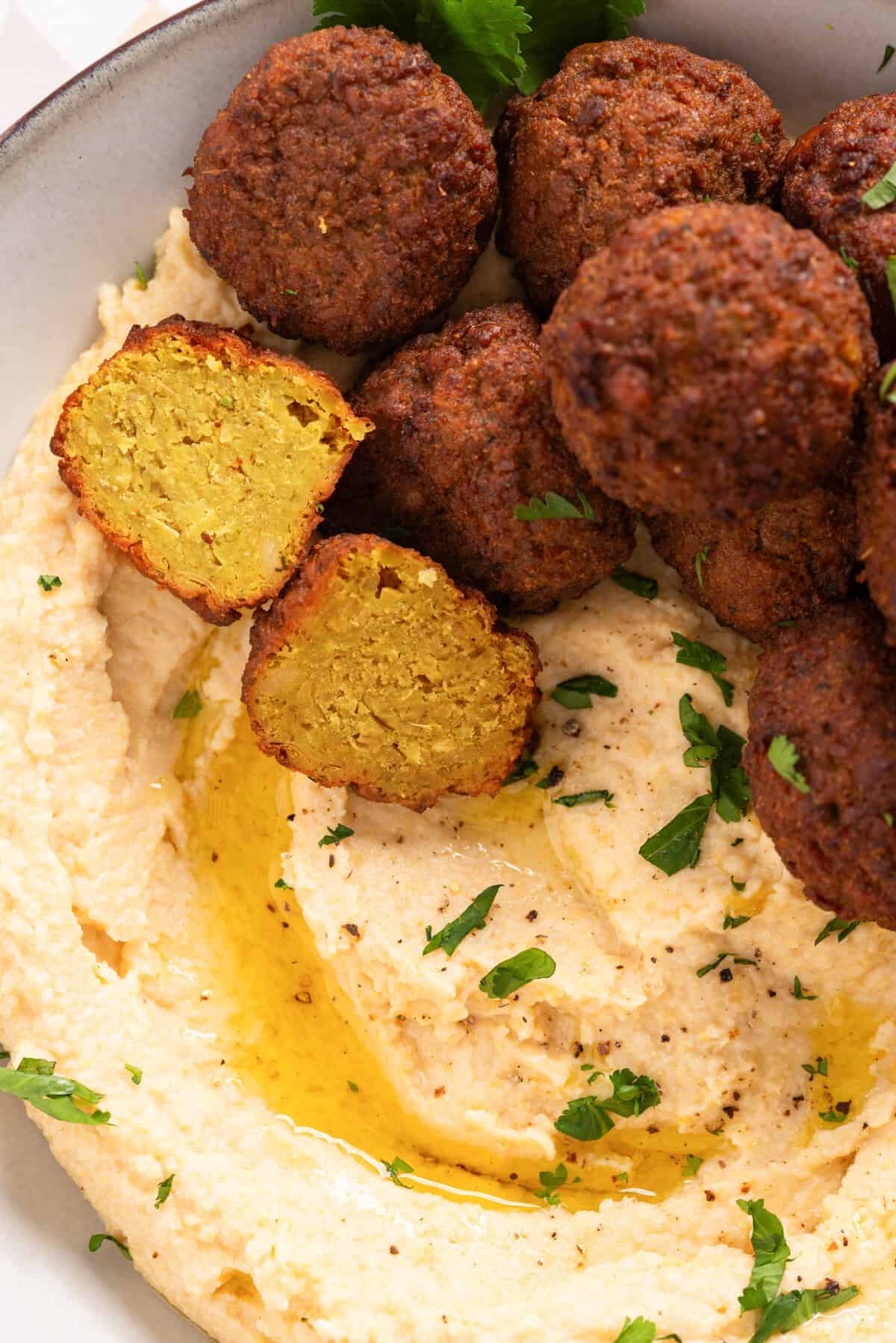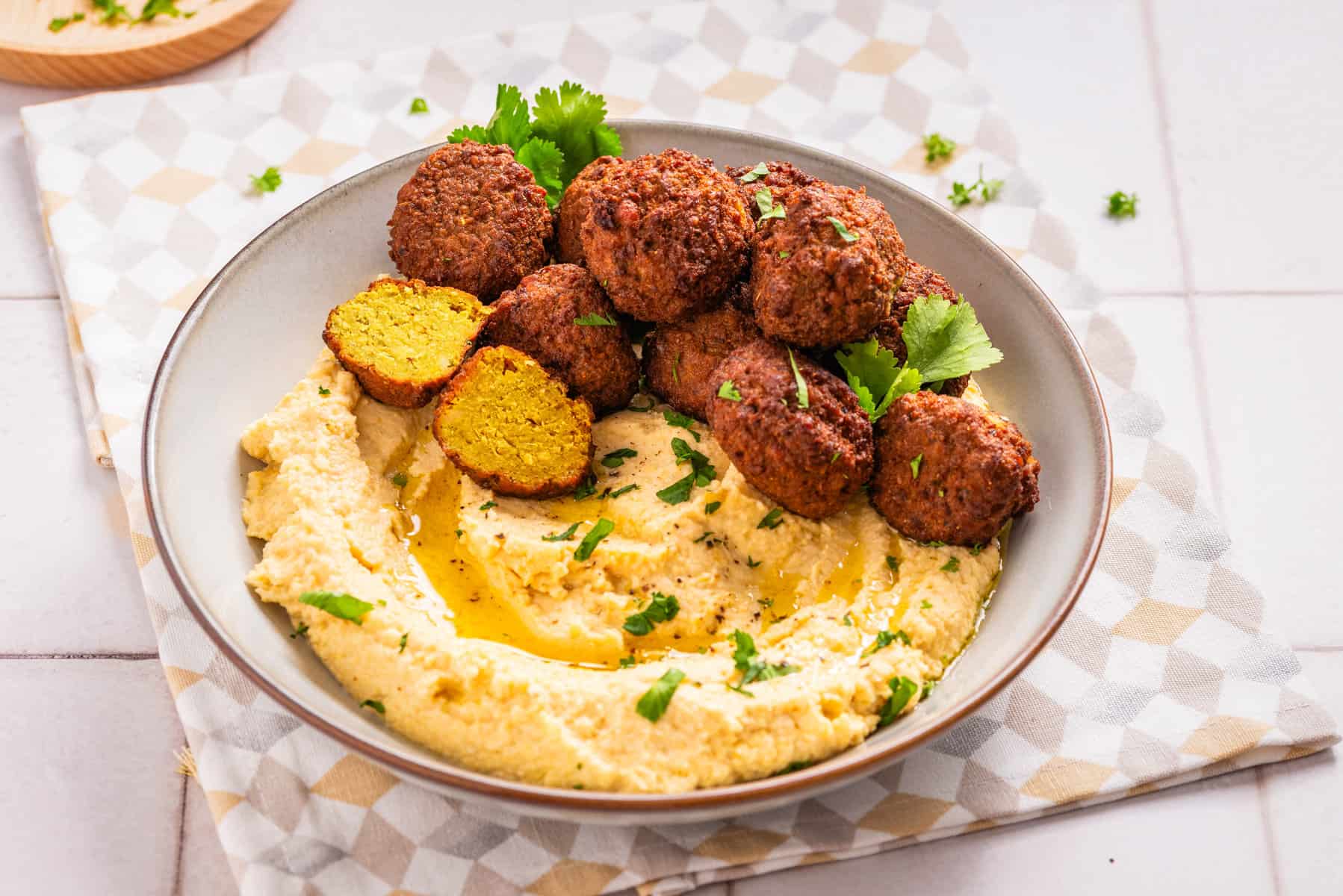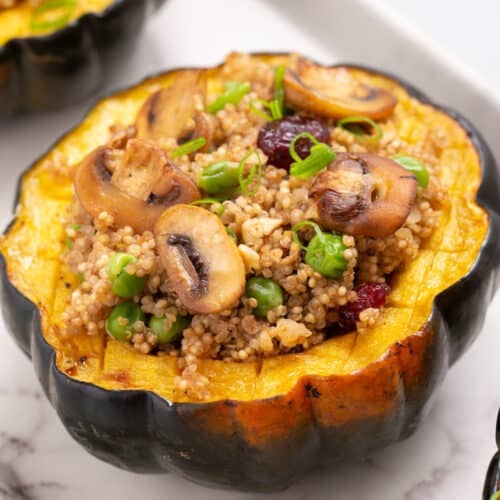This post contains helpful tips and tricks! If you’re in a rush, please use the “Jump to Recipe” above!
💭 Why you’ll love this recipe
Healthy combination, easy to make. Authentic Middle Eastern flavors. I first learned this recipe when I was in Jordan, and have since adapted it to make it easy to get it right each time. Versatile. Serve hummus and falafel on their own or pair it with pita bread, fresh tomato and cucumber salad, or make a loaded hummus and falafel bowl and add olives, pickles, and olive oil!
📋 Ingredients and notes
To make hummus and falafel, you’ll need dried chickpeas, tahini, lemon juice, extra virgin olive oil, garlic cloves, onion, parsley, fresh coriander, dried dill, ground coriander, cumin, cayenne pepper, za’atar (optional), baking powder, all-purpose flour, vegetable oil, and salt.
Notes and variations
Dried chickpeas. Soak dried chickpeas overnight, or for at least eight hours before cooking. Alternatively, you can use canned chickpeas, and skip the soaking part. But I highly recommend dried chickpeas, if you can! Tahini. If you don’t have tahini, you can make a tahini substitute by blending roasted sesame seeds with olive oil until smooth. Lemon juice. Use freshly squeezed lemon juice to get the best flavor for your hummus. Baking powder and all-purpose flour. Baking powder helps give falafel a light and fluffy texture. All purpose flour helps make it crispy, but you can also use a 1:1 gluten-free baking mix instead. Vegetable oil. Use vegetable oil for frying falafel. Canola oil, peanut oil, or sunflower oil are suitable alternatives for frying.
📖 How to make hummus and falafel
Drain well and prepare to use. After soaking, you will have around 1 pound of soaked chickpeas. Divide into ½ pound each for the hummus and the falafels recipes.
Step 3: Make falafels
4: Prep frying pan and shape falafels. Take a medium saucepan with a deep and heavy base (or a cast iron skillet) and fill it with enough oil to reach 2 inches up the sides of the pan. Heat the oil to a temperature of 360°F / 180°C. Combine the remaining ½ lb of soaked chickpeas, onion, garlic, parsley, and cilantro in a mixing bowl. Add half of the mixture to a food processor. Process the mixture in batches, pulsing each batch for 30-40 seconds until finely chopped, ensuring it keeps its texture and doesn’t become mushy or pasty. The mixture should hold together when shaped. Don’t pulse too fine.
👩🏽🍳 Tips to make the best hummus and falafel
⭐ Use dried chickpeas for falafels, either works for hummus! Dried chickpeas in falafels offers a better texture, with a crispy exterior and moist interior. While canned chickpeas are convenient, they may lead to a less desirable texture due to excess moisture. Drain the water, pat and dry the chickpeas after soakig.
Process in batches. When processing the falafel mixture, pulse in batches for 30-40 seconds to finely chop without becoming mushy. The mixture should hold together when shaped. Do the ice water trick. For an extra smooth texture in your hummus, add a couple of ice cubes to the blender or food processor. The coldness of the ice helps emulsify the ingredients. To have a thinner consistency. If you think your hummus is too thick, try adding a tablespoon of cold water to the food processor to thin a little. Test oil temperature. Before frying the falafels, make sure the oil is hot enough (around 350°F or 175°C) by dropping a small piece of the mixture into the oil. If it sizzles and floats, it means the oil is hot enough. Form into evenly-sized shapes. Form your falafels into equal sizes, whether balls or patties, for consistent cooking.
🍴What to serve with hummus and falafel
Hummus and falafel are a delicious combination, often served together as part of a meal. Falafel is traditionally served warm, and it is best served right after frying to maintain its crispiness. To make your mealtime even better:
Serve it alongside pita bread to make falafel wraps, or add a simple tomato and cucumber salad. Make a loaded hummus and falafel bowl and add olives, pickles, and olive oil. Drizzle tahini sauce on falafels for a finishing touch!
🍶 Storage and reheating instructions
To store leftover hummus and falafel, place them (separately!) in airtight containers and store them in the fridge for up to 10 days for the hummus and up to 3 days for the falafel. To freeze uncooked falafel mixture or patties, store them in a freezer bag and keep them for up to six months. You can also freeze cooked falafels for up to three months. When ready to eat, reheat falafel in an oven, toaster oven, or air fryer to restore the crispiness. You can reheat the hummus in the microwave for one to two minutes or until heated through.
🍴More hearty, delicious recipes
If you are looking for more delicious vegan recipes that are hearty, check these out. If you want even more, check out these delicious main courses. If you tried this recipe, don’t forget to comment and rate! ⭐⭐⭐⭐⭐
📖 Recipe
